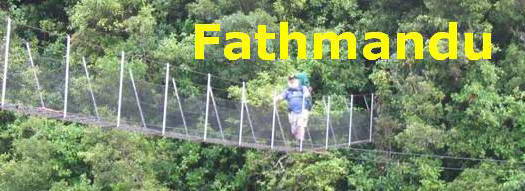
Many thanks for permission to use graphics from their software and toposheets |
 |
|
Microsorum scolopendria (Burm.f.) Copel.,Fragrant fern, Mokimoki(Mokimoki is also applied to a species of Doodia)Derivation: Micro = small; sorum (from Latin sorus, from Greek soros, a heap) = A cluster of sporangia borne on the underside of a fern frond, or a reproductive structure in certain fungi and lichens; scolopendria=like a centipede
Synonyms
The genus is listed in the family Polypodiaceae in the online Australian Flora) but as far as I can tell is considered now part of Drynariaceae. It appears to have attracted major interest from taxonomists. I have included a link below to the New Zealand Flora description
Next time I see this fern I shall smell it. According to descriptions, it has a noticeable smell of musk when green or recently pressed. Other reports suggest the smell is more like crushed insects. It has several forms, a rounded leaf on or near the ground, followed by a single long leaf, visible at the bottom of the picture, followed by pinnatiform leaves as it climbs the trunk. (Note. On a subsequent visit to the Mt Auckland site I bruised a number of these fern fronds over several trees with no appreciable resulting fragrance. There is, however, a strong resemblance between this photo and the one on the NZPCN website. Dobbie comments that the smell is evident when a frond has been recently pressed. More information needed.) Here you can see the attachments to the trunk of its host.
New Zealand Flora Information Family: Polypodiaceae Genus: Phymatodes Species: Phymatodes scandens (See Entry on genus Microsorum in Australian Flora:Epiphytic or lithophytic ferns, occasionally terrestrial. Rhizome long- or short-creeping, scaly; scales clathrate, at least in the centre. Stipes articulated to short stalks (phyllopodia) borne at intervals along the rhizome. Lamina simple and entire, variously lobed or deeply 1-pinnatifid; veinlets running in all directions and ending in hydathodes. Sori rounded or somewhat elongated, superficial or impressed into the lamina, arranged in ±regular rows or scattered over the surface. Spores smooth or tuberculate. A genus of c. 50 species, including those sometimes placed in Phymatodes C.Presl (now correctly called Phymatosorus Pic.Serm.) from Africa to Polynesia but predominantly in tropical Asia; eight species in Australia. Phymatosorus has been quite widely adopted recently, following Bosman (1991), but I (PDB) prefer to retain the more broadly circumscribed genus. Nooteboom (1997) has confirmed that some of the diagnostic characters of Phymatosorus, as interpreted by Bosman, are not as consistent as she implied, or were interpreted incorrectly. In addition, there is evidence of hybridity between the genera Microsorum s. str. and Phymatosorus (see Microsorum maximum p. 481). In particular, the application of the terms anadromous and catadromous is of doubtful value when applied to areolate venation.
|
|